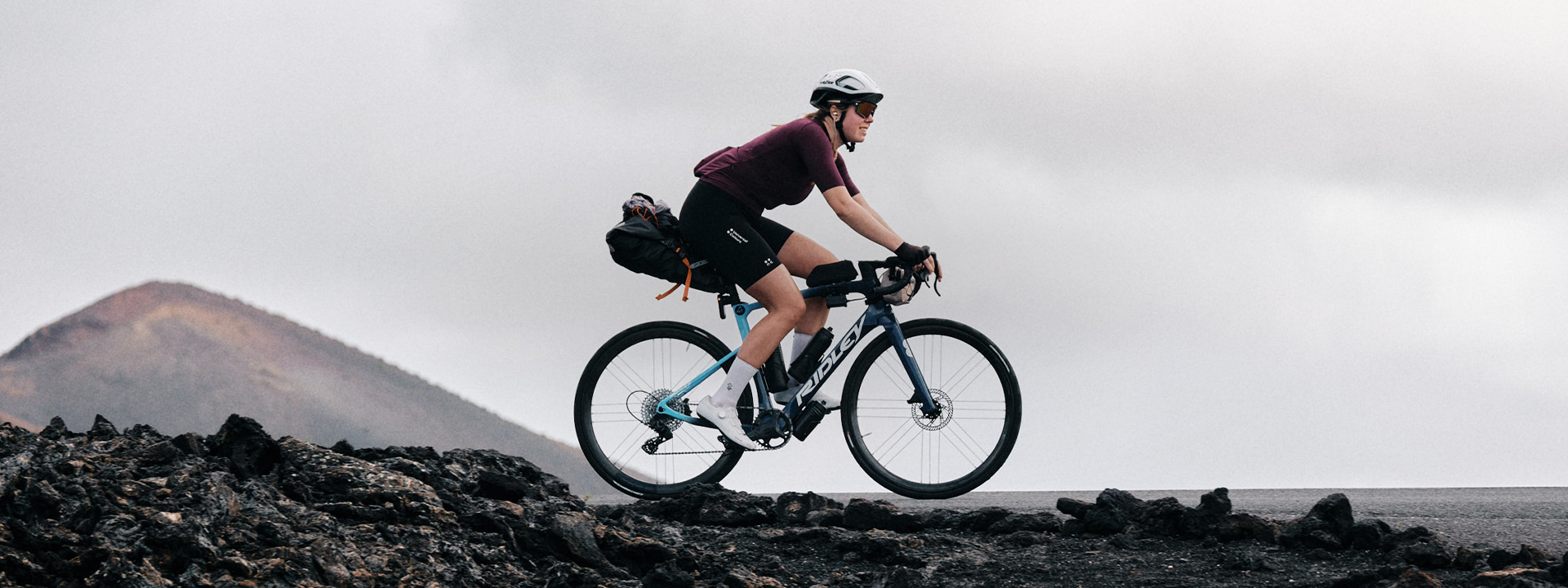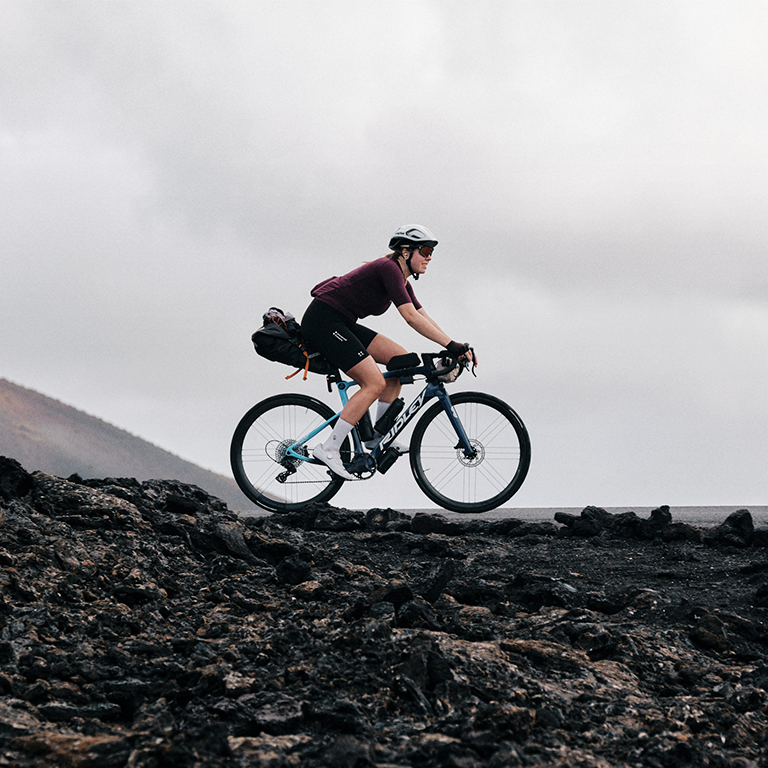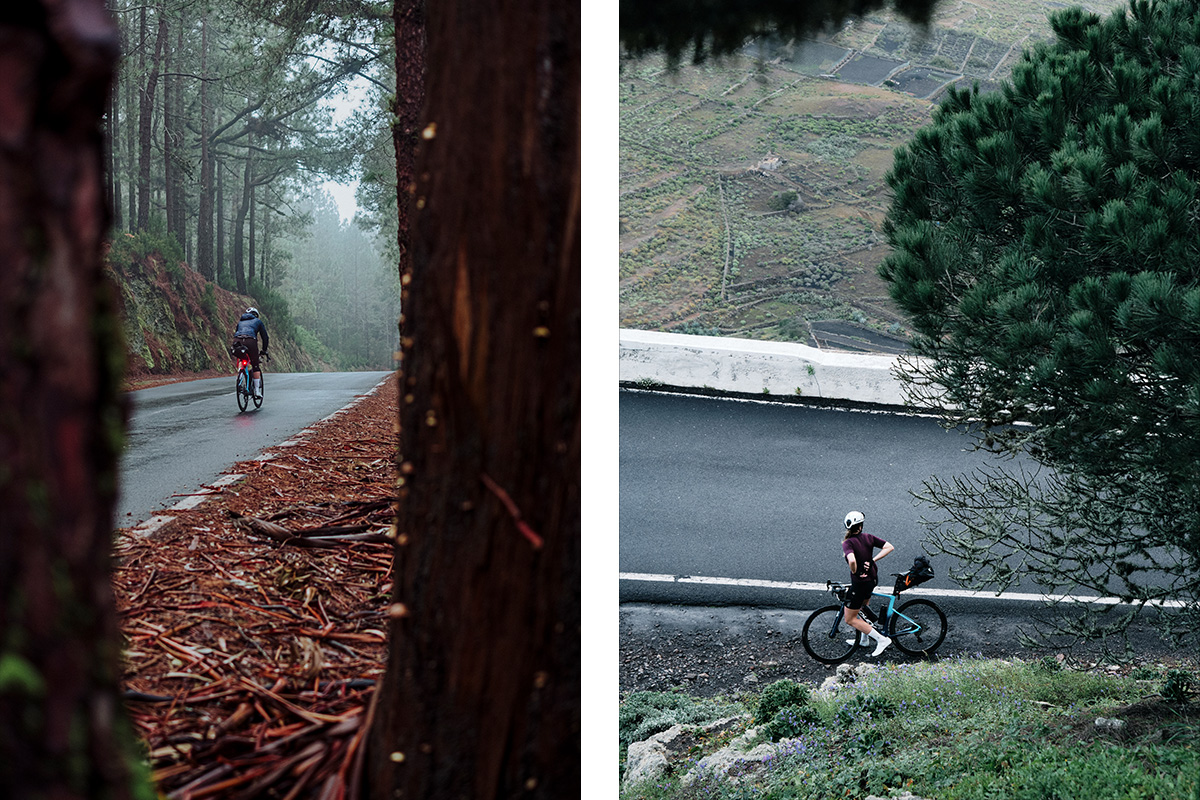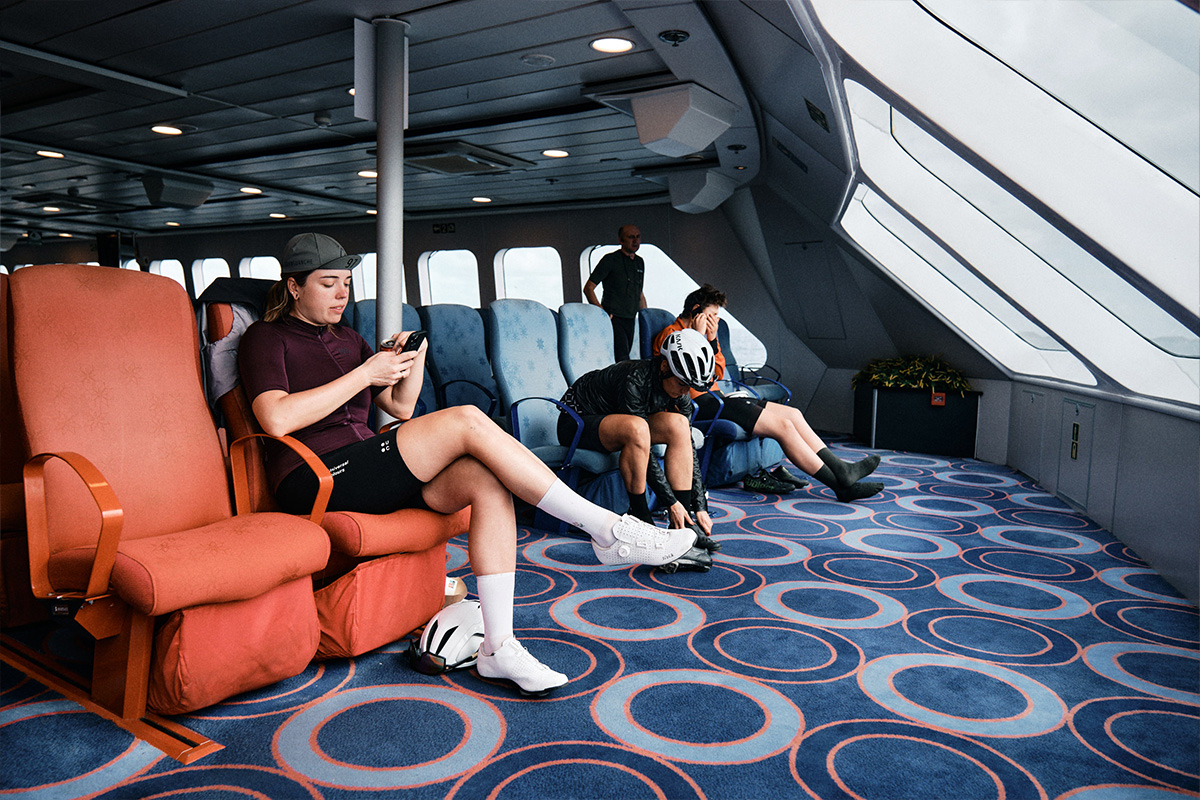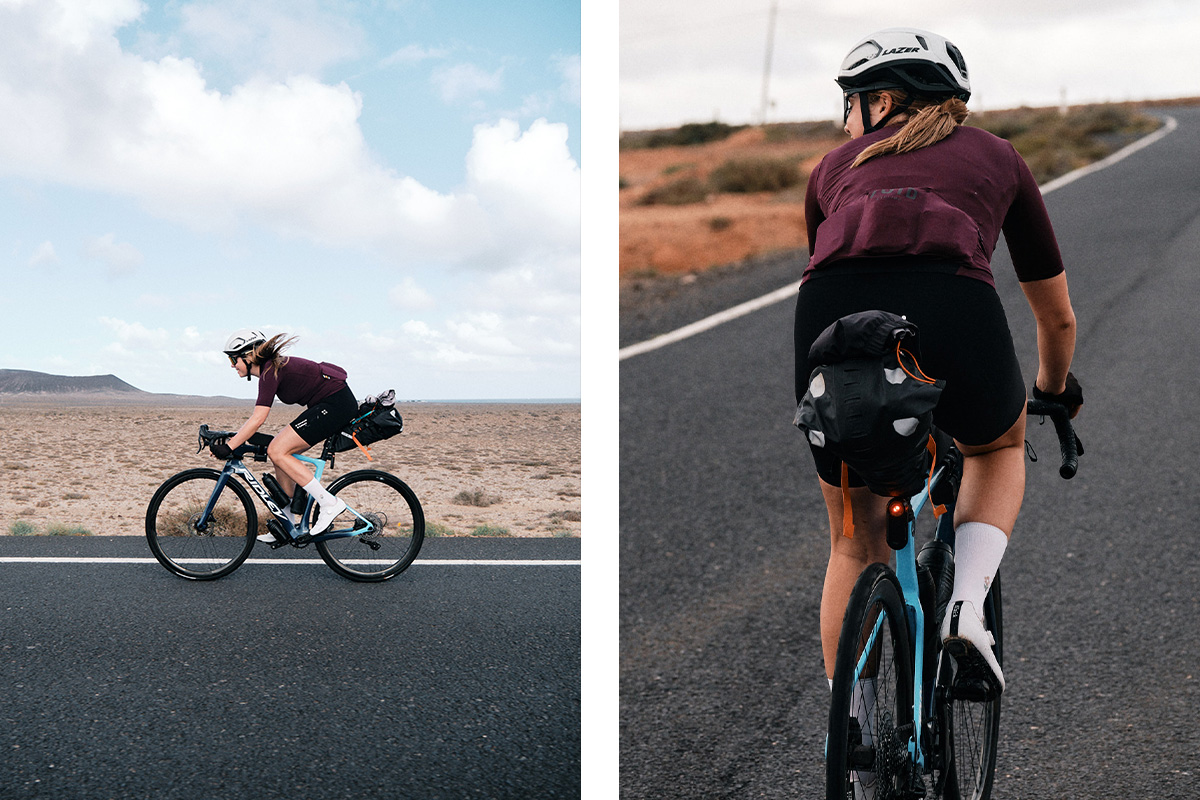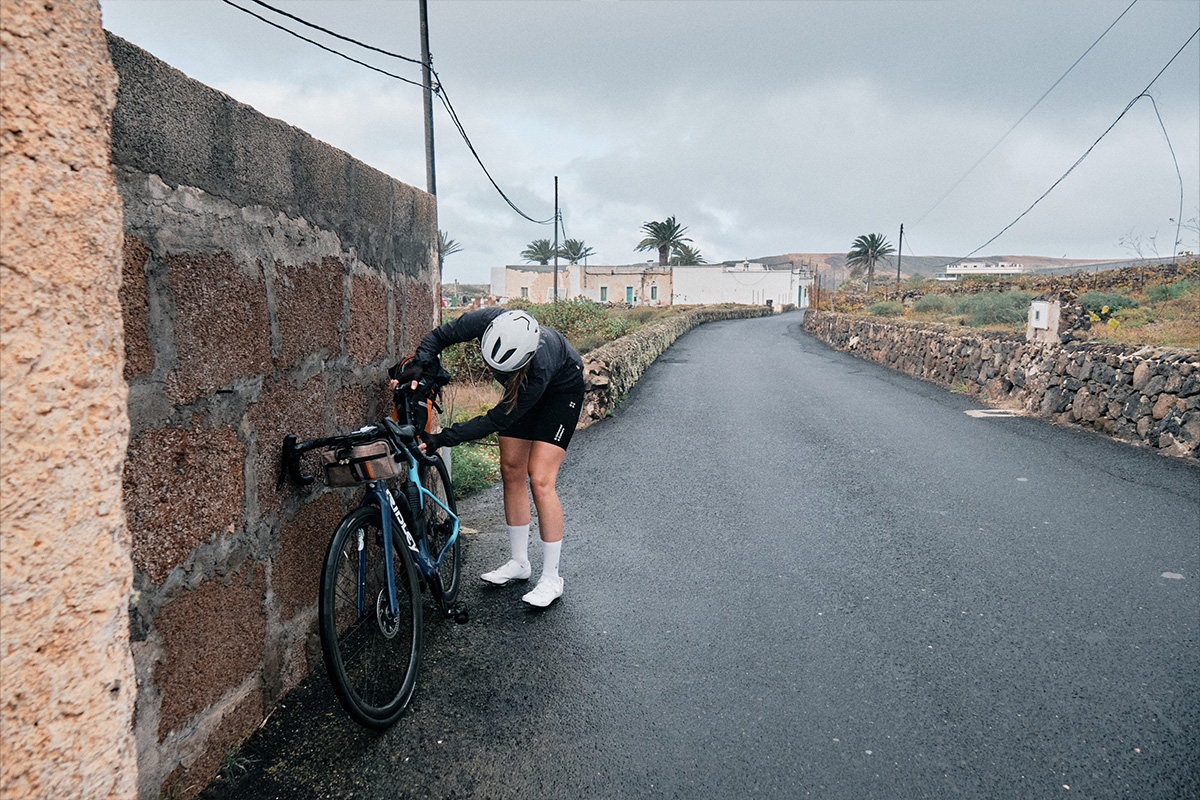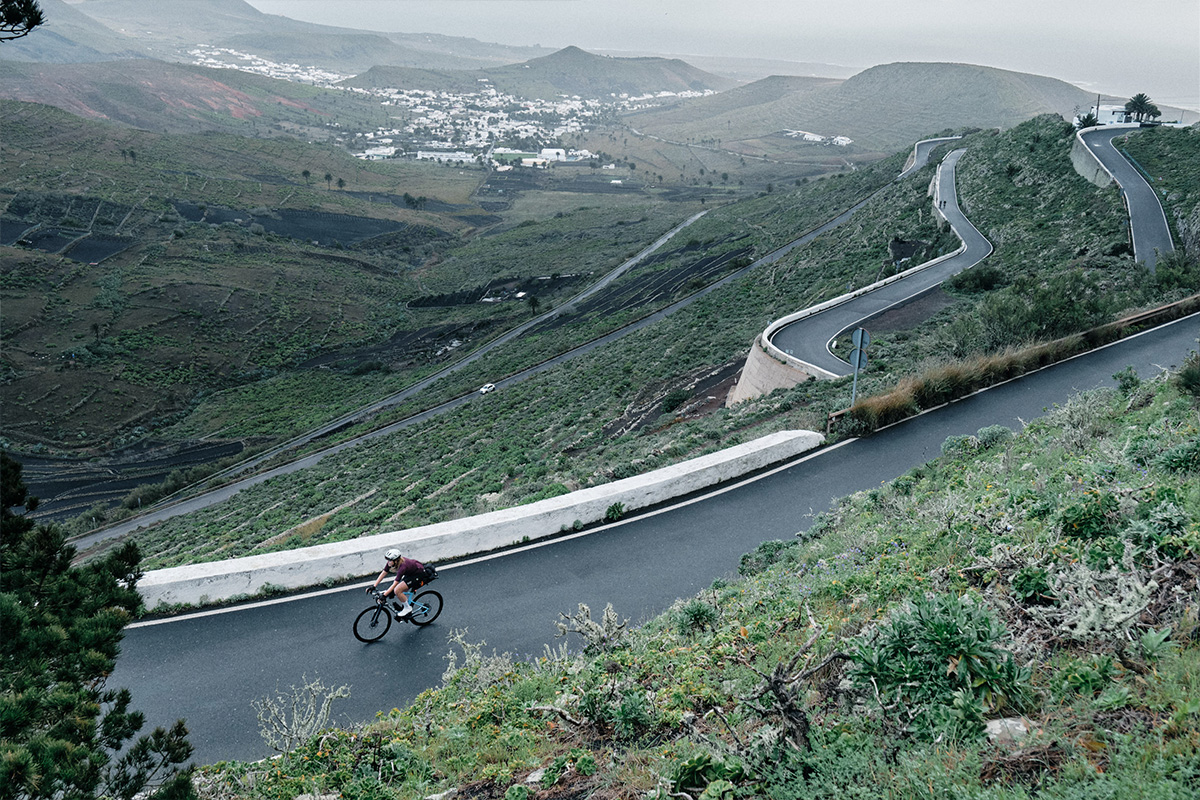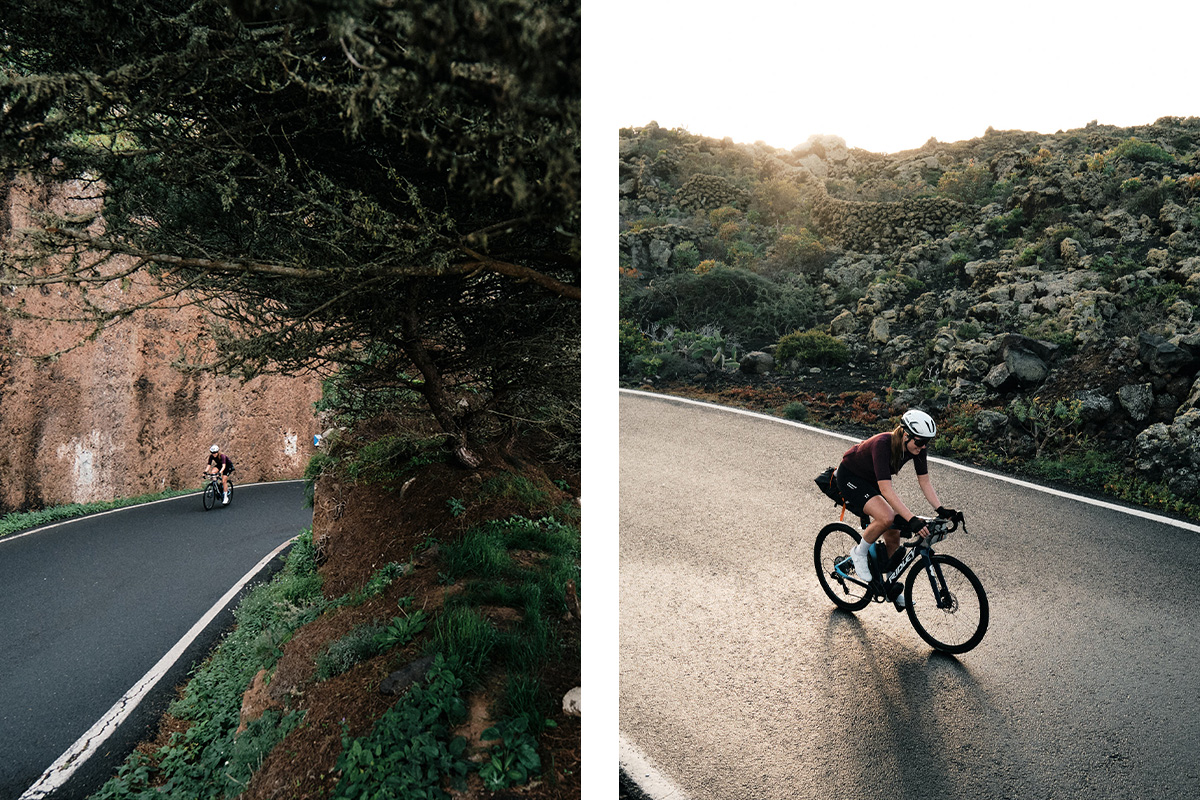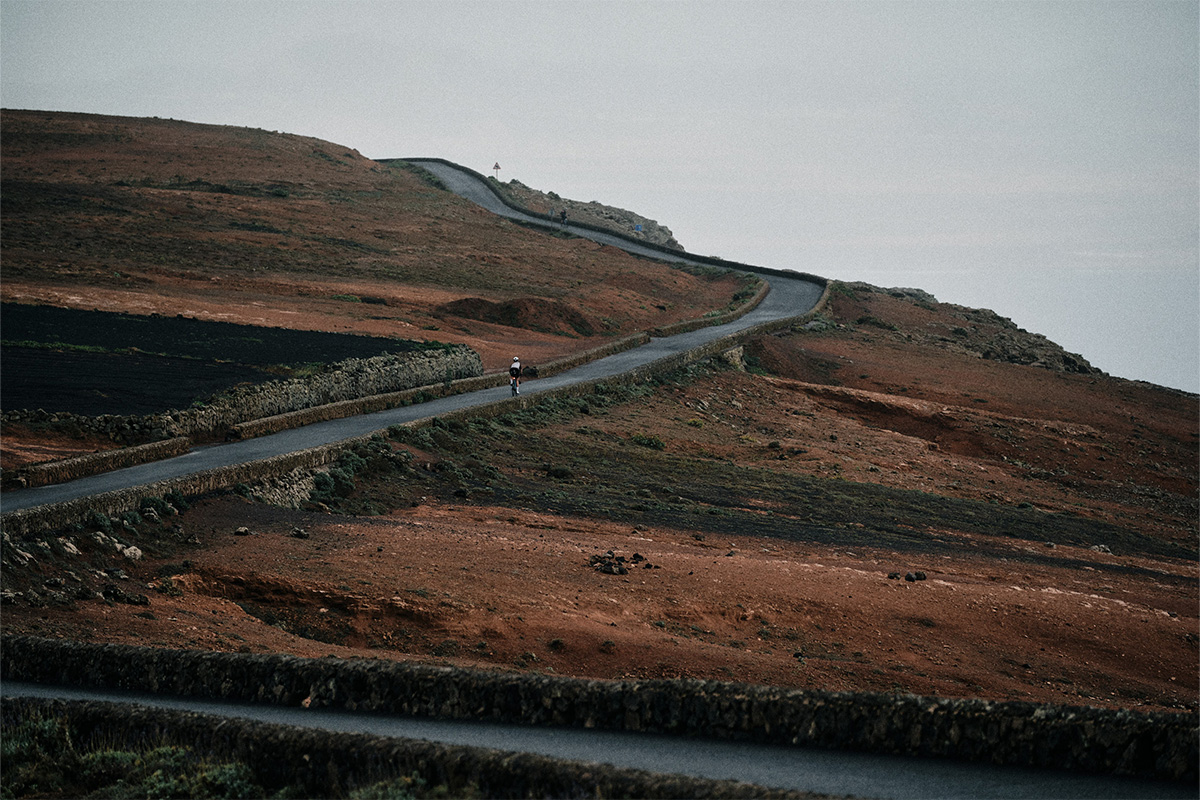For most riders, the goal of any race is to reach the finish first — or at least to do so as fast as possible. But is finishing position — or finishing at all — the only value that matters? Based on Austrian cyclist Nora Turner’s recent experience taking on the Gran Guanche Audax Road Race, the answer would be a resounding no. Dive inside her exciting, difficult, unforgettable first Ultra attempt below.
Small Victory: Getting to the start
Normally, you would read texts like this one from winners. About people who have pulled something through with an iron will, fighting until the last second! This is not one of those texts. Who am I? I’m Nora, 28 years old, from Vienna—and I’ve been riding road and gravel bikes for almost six years. I started quite early with classic bike marathons and crits, but I had never done anything that lasted longer than 24 hours.
So, what is the race? The Gran Guanche Audax Road Race is a single-stage unsupported 600KM race with 14,000 meters of altitude across five Canary Islands—always on the relentless hunt for the next ferry. My plan? Lanzarote and Fuerteventura on Day 1, Gran Canaria and the foot of Teide in Tenerife on Day 2, Teide and a bit of La Gomera on Day 3, and then a relaxed finish at midday on Day 4.
Arriving in Lanzarote, I unpacked my bike at the airport, drove to Orzola — the starting point — and was barely in my apartment for five minutes when I decided I had already made it to the start line, why shouldn’t I celebrate? At the supermarket I bought everything for breakfast the next day and some snacks and walked to the beach. I was close to tears of joy as I stretched my feet into the Atlantic Ocean and then enjoyed the sunset at 20 degrees!
The next day I cycled to Puerto del Carmen, 55km with a tailwind, to get my race number and spent the evening feasting with other participants from Vienna. Bags were mounted on the bike, tracker attached, batteries charged, and I had trouble falling asleep due to the nervousness. The weight of the bike including water in three bottles was about 16kg. The weight of my pre-race-jitters? Even heavier.
Two Days and Three Islands – Days 1 and 2
The race started at 8 a.m. directly uphill to a viewpoint of the cliffs, which I had already admired from below on my way to the beach. While most of the other participants pedaled right past me, I rode my usual uphill pace. Unfortunately, we “slow ones” were directly affected by the moods of the weather: after 10 kilometers, right before the first descent, it poured cats and dogs!
With rain showers, sunshine, a few serpentines, and always chatting with other participants, we went uphill and downhill—until we had to ride a bit against the wind in Teguise. On the descents, the constant 42 km/h winds, with even stronger gusts, had pushed me around on the road a few times, but now it was getting really scary. While Lanzarote had so far been alternately a bit desert-like and then green again, I now rode into a volcanic national park — and with a tailwind.
After a long descent on a perfect cycle path, I arrived at the port of Playa Blanca at just the right time and pushed my bike onto the planned 13:30 ferry. Nevertheless, I also experienced my first real low here on the ferry: I had felt uncoordinated in the first few hours, was slower than planned, and often had to struggle with anxiety and fear.
For the first 20 km on Fuerteventura, the tailwind blew me along a beautiful windsurfing beach with large dunes, before I rode through a few hills and a red-rock landscape with my “friend”, the crosswind, towards Tindaya. My brake pads must not have taken the frequent scare-braking, the wet and the sand so well, because even in the dry they made noises that you definitely don’t want to hear and were grinding relentlessly. A quick roadside brake-pad change, during which the wind blew my mounting screw into the sand leading to a 20-minute search, brought me even closer to sunset.
I continued on my way, all alone here on a wide corridor; the region is quite rural. The others were either far ahead of me or had made themselves comfortable to sleep behind me. In front of me, however, a wall of stone was building up, and I could already see from the foot of the mountain, at an impressive height, what I was about to cycle up. Crank turn after crank turn, I pedaled up the mountain, mostly in the middle of the road because I’m afraid of heights. The descent was dark — darker than it had ever been around me. Wet, slow, difficult, and I was just done with nerves.
I was so glad when I made it to Betancuria, where at least there were streetlights, and I had to sit down. Another 1,500 meters of altitude and 70 kilometers in this condition was a very, very bad idea for me. A different solution was needed: a hotel for tonight. Several calls, everything booked up, even off the route. Not even a couch in hotel lobbies or a garage. But then I discovered three more paused trackers in the village. I hadn’t exhausted my luck for the day just yet. The Trio Infernal, as I would later call the Spaniards Victor, Alex, and Alvardo, offered to put me up in the spare bed in their flat. And they even ordered me something proper to eat while I was on the way! Was this a dream?
We had a really nice evening together. We exchanged stories about our setups, the various challenges of the previous day and the upcoming one. We made plans for tomorrow and then went to bed, totally exhausted but happy.
I would have caught my second planned ferry from Morro Jable at 6:30 if I had pushed through the night. The next one didn’t leave until 4pm. This meant a relaxed day and the opportunity to make realistic plans for the second night. I was glad I hadn’t done the beautiful road through the impressive rock gorges in the dark, because I couldn’t stop grinning: it’s so beautiful here! In Pajara, after the first major climb, we had a delicious breakfast of freshly squeezed orange juice, bocadillos(sandwiches) and coffee. Pajara means something like “bonking” in sports, by the way. No bonking on that day after the Pajara breakfast for me, though!
I then continued mostly alone on a really perfect cycle path through dunes and hills alongside a motorway. I have never seen anything like it. The asphalt was just absolutely gorgeous and the sea on the left was a perfect distraction from the little engine noises on the right. From Costa Calma onwards, the highly touristy part of the island began, but Fuerteventura should not be reduced to only that!
After rejoining my Spanish friends for a delicious lunch, we boarded the second ferry to Gran Canaria. Strong swells and another mental low made it not exactly the perfect break. But we had a plan: today we would ride in the dark through the densely populated coast to the foot of THE climb on Gran Canaria.
Together with two Germans, we rolled through the rather large city of Las Palmas and began the climb. Here we kept passing through small towns, which was extremely reassuring for me, but the Spaniards were all over me and I couldn’t ride downhill like they could. Instead, I met Juli from Bavaria and asked to ride a bit together. We both happened to have booked accommodations at Ingenio and got along great from the start, rode at a similar pace and I just felt incredibly comfortable around her.
After a really nice and relaxing ride into the night, I raided the local Spar, checked into my room in an old camel yard and was even able to wash and dry my jersey. The host had to smile when I looked at a cozy standard room and asked, “What? This is ALL for me?”
The Ride Continues, until it Doesn’t—Days 3 and 4
Juli and I met in the dark at 7:15 and ate altitude meters for breakfast. Legs already shaken from the days before, bikes full of water for the remote area — so heavy. But our mood? Great! We changed between chatting and struggling on our own. In places, I had to push my bike. Although the general conditions don’t really sound like a great time, it was a wonderful morning for us. In hindsight, I really have to say that with the packed bike and this amount of elevation gained in such a short distance, it was the hardest climb I have ever done. After almost 2.5 hours uphill, we were finally above the clouds!
The views were absolutely fantastic! Mount Teide on the neighboring island of Tenerife seemed almost within reach. The descents were partly on older, broken roads, but through absolutely impressive surroundings. We rode on in a huff and were in good spirits to make it to the 4pm ferry.
Gran Canaria is a well-known road cycling destination, and you could see that on the roads! One absolutely fantastic view after the other and nice villages with nice cafes. Even today, I often think back to this simply perfect day in Gran Canaria! On the ferry, we ate some more and made a plan to ride about 40 more kilometers together on Tenerife through the Anaga Forest to the foot of the Teide, before recovering for the King’s stage.
Into the sunset we rode the constant climb towards the mountains in the north of the island, in good spirits, because we were together! We both had been struggling with fear in remote areas at night, but together we could manage that. Or could we? The moon, barely thinner than a crescent, was the only source of light here apart from our front lamps, and we drove through a forest that certainly looked beautiful and enchanted in the light.
We had stopped in a small village when fear literally shook us as one of those mean shepherd dogs came running at us! I had heard “Beware of the Anaga dogs” before, but I had no pepper spray or stones in my pockets to make it past the dog. We preferred to make a run for it, back to a small house where three gentlemen were drinking wine and screwing around with their car. We asked to rest a little on a bench sheltered from the wind, safe from the dogs, and wait until a bus could come and take us to our hotel. Tomorrow was a new day; we had done our work for today and just wanted to be safe. Once there, I booked a transfer to take me back to the point where we had boarded the bus for the following morning. This is allowed at such races if the service is available to all participants.
The next morning, however, I woke up to an email that my transfer had been cancelled. And Juli woke up shaken by a cough, knowing that she would not make it over the Teide without risking serious health consequences. So, I was alone at the foot of the Teide. I could have cycled two hours back to the point where we took the bus, done the bit of road again and THEN cycled over the Teide. Or I could have counted on the goodwill of the bus drivers in rush-hour traffic to drive my bike and me up into the Anaga Forest, which would have cost a lot of time and even more nerves.
But at that moment I didn’t have the nerves anymore. The night before, when we were on the bus to La Esperanza, I said to myself: worst case, you’ll just do the Teide “like that”, not as part of the race, but outside the Audax classification. So, the decision to scratch was not spontaneous.
The email was written quickly. I wasn’t sad, rather a bit angry and disappointed because of the transfer that had let me down — but that’s how it is with Ultras. Brought back down to earth by the fact that despite the race, I couldn’t get out of my skin and wasn’t magically suddenly faster at descending; this is where I really lost the most time. Irritated that the darkness on the Canary Islands was so much harder for me to handle than during night rides in Austria. But most of all: freed from the pressure I had put on myself in the last few days.
You can ride along for more of Nora’s adventures on Instagram at @unicorncycling.

